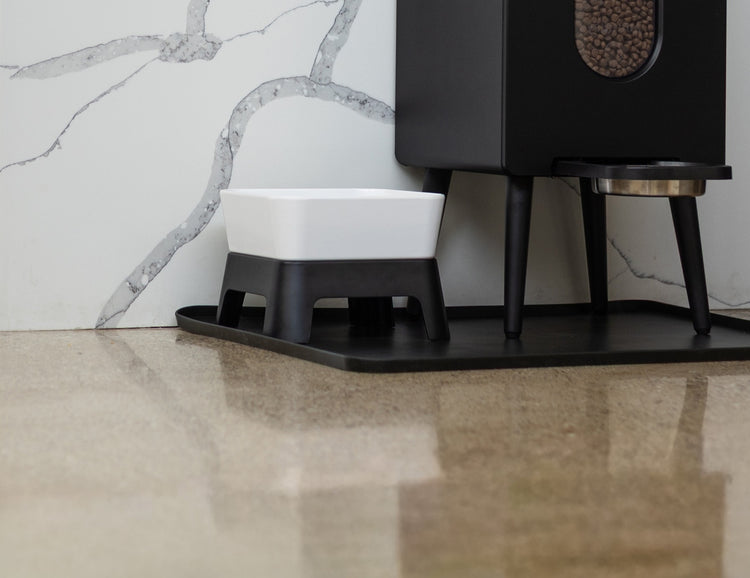Understanding Xoloitzcuintli Health Problems: A Comprehensive Guide for Pet Owners
- Houndsy
Table of Contents
- Introduction
- The Xoloitzcuintli Breed: An Overview
- Common Health Problems in Xoloitzcuintlis
- Preventative Care for Xoloitzcuintlis
- Living with a Xoloitzcuintli: Lifestyle Considerations
- Conclusion
- FAQ
Introduction
Did you know that the Xoloitzcuintli, also known as the Mexican Hairless Dog, is one of the oldest breeds in the world, dating back over 3,500 years? This remarkable breed, revered by the Aztecs and considered a spiritual guide, is celebrated not only for its striking appearance but also for its unique personality traits. However, like all breeds, the Xoloitzcuintli has its share of health concerns that potential owners should be aware of.
In this blog post, we aim to provide a thorough understanding of the health problems associated with the Xoloitzcuintli. We will delve into common issues, preventative care, and the importance of regular veterinary check-ups. By the end of this article, you will have a comprehensive view of how to maintain your Xolo’s health and well-being, ensuring that your furry friend lives a long, happy life.
Let’s explore the fascinating world of Xoloitzcuintlis and what it takes to keep them healthy and vibrant!
The Xoloitzcuintli Breed: An Overview
History and Origins
The Xoloitzcuintli has a rich history intertwined with Mesoamerican culture. This breed was highly regarded by ancient civilizations such as the Aztecs, who believed that Xolos had healing properties and could guide souls to the afterlife. Their unique hairless characteristic is not just a quirk but an adaptation that has served them well in warmer climates.
Today, the breed is recognized for its intelligence, loyalty, and calm demeanor, making it a suitable companion for families. As we discuss health problems, it's essential to appreciate the unique traits that define this breed.
Size and Variations
Xoloitzcuintlis come in three distinct sizes:
- Toy: 10-14 inches tall
- Miniature: 14-18 inches tall
- Standard: 18-23 inches tall
Despite their size differences, all Xolos share similar health challenges, primarily due to their genetic makeup and environmental factors.
Common Health Problems in Xoloitzcuintlis
While the Xoloitzcuintli is generally a healthy breed, they can be prone to specific health issues. Understanding these problems is crucial for proactive care.
Skin Conditions
One of the most significant health concerns for Xoloitzcuintlis is skin-related issues. Their hairless nature makes them susceptible to various dermatological problems, including:
- Acne: Particularly common in adolescent Xolos, acne can manifest as red bumps or pimples on the skin. Regular bathing with a gentle dog shampoo can help manage this condition.
- Sunburns: Xolos lack fur to protect their skin from UV rays. Pet-friendly sunscreen is essential for outdoor activities, especially in sunny weather.
- Dry Skin: Due to their lack of fur, Xolos can suffer from dry skin. Regular moisturizing with vet-approved lotions can keep their skin hydrated.
Orthopedic Issues
Like many breeds, Xoloitzcuintlis can experience orthopedic problems, including:
- Hip Dysplasia: This genetic condition affects the hip joint, leading to discomfort and mobility issues. Regular vet check-ups can help detect hip dysplasia early, allowing for timely intervention.
- Patellar Luxation: This occurs when the kneecap dislocates from its normal position. Symptoms may include limping or difficulty climbing stairs. Surgical options are available for severe cases.
Dental Problems
Xoloitzcuintlis are also prone to dental issues. Their unique physiology means they may have missing teeth, which can lead to additional dental health concerns. Regular dental check-ups and cleaning are crucial to prevent periodontal disease.
Obesity
Xolos have a hearty appetite, which can lead to obesity if their diet is not carefully managed. Obesity can result in multiple health issues, including joint problems and cardiovascular disease. It's essential to monitor their weight and ensure they have a balanced diet tailored to their specific needs.
Preventative Care for Xoloitzcuintlis
Understanding potential health problems is just the first step; preventative care is crucial in ensuring a healthy life for your Xoloitzcuintli.
Regular Veterinary Check-ups
Routine vet visits are essential for early detection of health issues. During these check-ups, your veterinarian will conduct thorough examinations and recommend necessary vaccinations, dental care, and screenings for common conditions.
Diet and Nutrition
A balanced diet is vital for your Xolo's health. Ensure their food meets the Association of American Feed Control Officials (AAFCO) nutritional guidelines. Here are some dietary tips:
- High-Quality Protein: Xolos require high-quality protein sources to support their active lifestyle.
- Omega Fatty Acids: Foods rich in omega-3 and omega-6 fatty acids can improve skin health, crucial for hairless breeds.
- Controlled Portions: To prevent obesity, consider using slow feeders or measuring their food to ensure portion control.
Exercise and Mental Stimulation
Xolos are intelligent and active dogs, requiring daily exercise and mental stimulation. Regular walks, playtime, and engaging toys can help keep your Xolo physically fit and mentally sharp.
Grooming and Skin Care
Despite being hairless, Xolos need regular skin care. Here’s how to maintain their skin health:
- Bathing: Regular baths with a gentle shampoo can help manage skin conditions.
- Moisturizing: Apply a dog-safe moisturizer after baths to keep their skin hydrated.
- Sunscreen: Use vet-approved sunscreen before outdoor activities to prevent sunburn.
Living with a Xoloitzcuintli: Lifestyle Considerations
Understanding the lifestyle needs of Xoloitzcuintlis is essential for their well-being. Here are some considerations for potential owners.
Space and Environment
Xolos adapt well to various living conditions, including apartments, as long as they receive daily exercise. However, they should not be left outside for extended periods, especially in extreme weather conditions.
Socialization and Training
Xolos are generally affectionate but can be aloof with strangers. Early socialization is key to helping them become well-adjusted adults. Positive reinforcement training methods are effective in teaching commands and managing behavioral issues.
Family Dynamics
Xolos can be great companions for families, including those with children. However, supervision during interactions is necessary to ensure safety for both the dog and kids.
Conclusion
Being a responsible pet owner of a Xoloitzcuintli involves understanding their unique health needs and taking proactive steps to ensure their well-being. By focusing on preventative care, regular veterinary check-ups, a balanced diet, and proper training, we can help our Xolos lead healthy and fulfilling lives.
If you’re considering adding a Xoloitzcuintli to your family, remember that knowledge is power. Understanding potential health issues and addressing them early can make all the difference. Moreover, incorporating tools like the Houndsy Kibble Dispenser can help streamline your pet feeding routine, ensuring your Xolo gets the right portions every time.
FAQ
1. Are Xoloitzcuintlis hypoallergenic? While no dog is completely hypoallergenic, many owners report fewer allergic reactions to Xolos due to their lack of fur.
2. What is the average lifespan of a Xoloitzcuintli? Xolos typically live between 13 to 18 years, with proper care and regular vet visits.
3. How often should I feed my Xoloitzcuintli? Puppies should eat three times a day, while adults can generally transition to two meals per day. Always consult your veterinarian for specific dietary recommendations.
4. What should I do if my Xoloitzcuintli has skin problems? Consult your veterinarian for the best course of action, which may include special shampoos, topical treatments, or dietary adjustments.
5. How can I keep my Xoloitzcuintli entertained? Regular exercise, interactive toys, and mental challenges are vital to keeping your Xolo happy and stimulated.
By being informed and proactive, we can ensure that our Xoloitzcuintlis thrive in a loving and healthy environment. Embrace the joy of owning a Xolo and provide them with the care they deserve!













